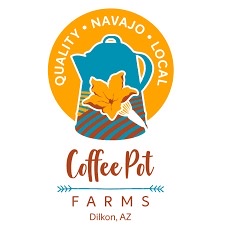Navajo Farming
Hundreds of Years of Tradition:
Preserved, Honored and Passed Down
Navajo Ethno-Agriculture is a Native American nonprofit formed out of our concern that upcoming generations are not exposed to food growth. Our tribal community educational farm is located in northwest New Mexico, along the San Juan River. For generations, we have preserved Navajo heritage crops and farming techniques. Over the past four years, we have designed a teaching environment to pass on this knowledge of our culture, history, and heritage foods.
Who we are
MAKE A DONATION
Years of tradition
years preserving it
Who We Are
About Navajo Ethno-Agriculture
Land
Healthy soil education. Soil testing. Moisture saturation measurements. Cover crop experimentation.
WATER
Water quality testing for agriculture. Water delivery through irrigation system. Indian Water Rights. Navajo Indian Irrigation Project.
AGRICULTURE
Native American food sovereignty movement. Court cases and policies that affect Indian agriculture. Environmental issues and catastrophes that affect agriculture. Chemical free, non-gmo, culturally driven farming.
What We Do
Sustaining Navajo Culture by
Teaching Traditional Farming
With more than 50 years of combined traditional farming experience, we continue to cultivate a learning environment where we can teach a broad range of traditional knowledge while incorporating current practices from the natural sciences.
Here’s a sample of our hands-on learning activities:
Winter Academic Term
January, February, March
We begin the semester with a farm tour to learn about the surrounding ecosystem, soil, local plants, and irrigation system. As the semester progresses, students measure soil health, study the heritage seeds to be planted in the spring, and draft a farm layout design. In March, we kick off the planting season by preparing the soil, readying the land, and sorting seeds for planting. We finish the season with a field trip where our students can observe the processing and packaging of the crops they have grown.
Spring
April, May, June
In April, we clear the irrigation canals and water inlet, clean the water pipes and plan the pipe layout, disc the field to soften soil, and make furrows to guide the planting. During the spring months, students learn how to identify natural organisms that can be destructive to the crops, such as invasive weeds, prairie dogs and Anasa Tristis or squash bugs. If the weather permits, students who are on the for-credit track may be able to plant crops in mid-May, before the semester ends.
Summer
July, August, September
During the month of July, our focus is on weed control and irrigation because the seeds have sprouted and need proper cultivation. Student campers and interns tour the farm and note areas needing care and get to work on fence maintenance, water pipe adjustments for flow efficiency, irrigation monitoring and weed control. Students learn traditional Navajo watering methods, and how to nurture the crops into growth and life.
Fall
October, November, December
After harvesting, food preparation, and storing are complete, we begin the most critical step in retaining and protecting our heritage foods. Seed saving is a special process for us because we are carrying on the tradition of preserving our cultural foods, which have not been altered or genetically modified and are adaptive to our changing climate.
Educators and Students
We implement the traditional ways of Navajo farming through teaching promising students. Teaming up with educators and students is a critical piece of what we do, because students are the means by which our traditions and heritage are passed down.
Students
Learn something new about traditional Navajo teachings – with respect to the Earth, our foods, and water.
LEARN MORE








